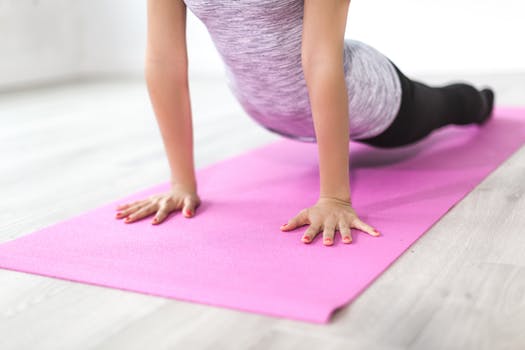How many hours a day do you sit? The danger of sitting all day is real.
Studies show an association between a sedentary lifestyle and premature mortality. But before you stop reading this article thinking that this doesn’t apply to you because you work out regularly, think again. Studies have differentiated between too much sitting and too little exercise, whereby one can be an “Active Couch Potato” – someone who’s physically active (spending at least 30 minutes of moderate-intensity physical activity on most days of the week), yet sits for extended periods.
Likely, you sit too much – whether it be in the car, at your desk, in front of the computer, or watching tv. Most of us spend between 55 and 70 percent of our day sitting down.
“Sitting is more dangerous than smoking, kills more people than HIV and is more treacherous than parachuting. We are sitting ourselves to death,” says Dr. James Levine, director of the Mayo Clinic-Arizona State University Obesity Solutions Initiative.
The Dangers Of Sitting All Day:
“Sitting is more dangerous than smoking, kills more people than HIV and is more treacherous than parachuting.”
Coined as “the new smoking”, prolonged sitting can compromise our metabolic health. Here are some reasons why you should care:
- Reduced Brain Function & Depression
Activity increases blood flow and releases mood-enhancing and cognitive chemicals. With inactivity comes reduced blood flow throughout our body, leading to a slowing down of brain function. The result is brain fogginess. One study also suggested that sitting for more than seven hours a day increased the risk of depression by 47% when compared to sitting for four hours or less per day. - Heart Disease
With blood pooling, blood flow tends to get sluggish allowing fatty acids to build quicker resulting in plaque, elevated cholesterol and eventually heart disease. If we are up and moving, fatty acids are better flushed from the circulatory system. - Colon & Endometrial Cancer
Prolonged sitting for a good portion of your work day can also increase the risk for certain cancers. While not fully understood, scientists think the lack of movement could be linked to an inflammatory cascade of metabolic processes, triggering overactive cell growth, particularly in the colon and also linking to endometrial cancer. - Muscle Degeneration and Tightening
When we are up and moving about, standing or even sitting up straight, our abdominal muscles support our back. But when hunched over, the abdominal muscles relax and hang loose. As a result of this lack of use, the muscles weaken and extra pressure is transferred to the back muscles. This muscle imbalance can eventually lead to a condition called sway back, resulting in back pain.
In addition, sitting for extended periods can also lead to a shortening and tightening of the hip flexors. Over time, this reduces the range of motion in the hips, increasing the risk for imbalance and instability, leading to an increased risk for falls.
Herniated discs are also a common condition brought about by prolonged sitting. The psoas muscle – the muscle running from the hips to the spine that provides stability – tightens. Over time, it shortens up from non-use and pulls the lower spine forward putting excessive pressure on some of the intervertebral discs. Eventually these discs, which function as sponge-like shock absorbers in between the vertebrae, squeeze out, causing pain and sometimes surgery to correct the condition.
“Frequently move around and do not sit for too long at one time.”
None of these situations are good. The solution? Frequently move around and do not sit for too long at one time. Studies have found that positive changes to metabolic biomarkers were associated with breaks in sedentary time. This included transitional movements, from sitting to standing, or from standing still to walking. Whether you work from home or sit in an office, think about how you can make your day more active. The ideal would be to move between five and 10 minutes each hour. What simple things could you do to achieve that?
Eight Ways To Sit Less:
- Get up and get a glass of water every now and again.
- Take a walk for 15 minutes after eating lunch.
- Take the stairs instead of the elevator if you work in an office building.
- Park in a spot further away, instead of one up front. I am guilty of this myself, why do we always try to get a spot closest to the door? Parking a bit further back gets you a few minutes of walking time!
- Stand and stretch every now and again.
- Have a walking meeting.
- Leave the office to get lunch, this requires getting up and moving.
- Set your timer at intermittent intervals to remind you to take a break, or download an app which dims your screen when it’s time for a break.
In the beginning it will take some adjusting, but over time it will become easier and automatic. My solution, I have set my iPhone to buzz every hour on the hour. I get up to get water which not only gets my body moving but keeps it hydrated.
Did you enjoy this article? Become a Kuel Life Member today to support our ad-free Community. Sign-up for our Sunday newsletter and get your expert content delivered straight to your inbox.























